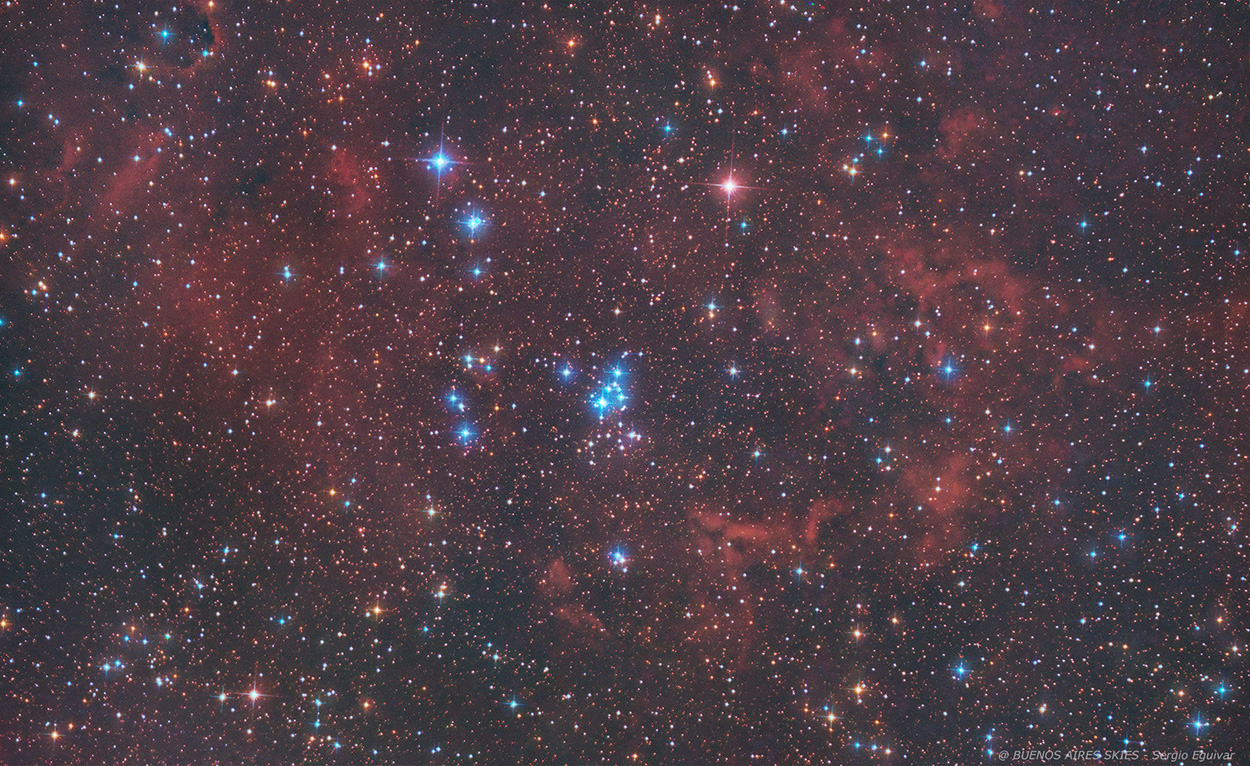
0222222222222222222222222222222222222222222222222222222.
| HOME |
NGC 2367
OPEN CLUSTER IN CANIS MAYOR (THE GREAT DOG)
(Image centered at: ra 07 h: 21 m / dec -21º 55')
CLICK THE IMAGE FOR A HIGH RESOLUTION VIEW
February 2025, Home Backyard in Martinez, Buenos Aires, Argentina
DATA
TYPE: Open Cluster
APPARENT DIAMETER: approximately 5 arc minutes in diameter
APPARENT MAGNITUDE (V): 7.9
DISTANCE: approximately 7.000 light years
IMAGE INFORMATION
INSTRUMENT: 6" ORION OPTICS UK (Ultra Grade Optics) w/Sky Watcher Coma Corrector (0.9x) working at at f4.5
CAMERA: QHY 183 MONO
MOUNT: VIXEN GDPX, OAG with Starlight Xpress Lodestar
FILTERS: BAADER LRGB Set + ANTLIA HA 4nm
SKY CONDITIONS: urban skies - Bortle 8
EXPOSURES: HaRGB (120,45,45,45)
OBJECT DESCRIPTION AND IMAGE SESSION
This young open cluster of stars is around 5 million years old. Most of its stars are young and hot and shine with an intense blue light. Like many open clusters, NGC 2367 is embedded within an emission nebula, the molecular cloud from which its stars were born. In this case the background emission material is part of the Brand 16 Nebula, and of the super shell region GS234-02. NGC 2367 is around 7000 light years from Earth, in the constellation of Canis Major. NGC 2367 was discovered by German British astronomer Sir William Herschel in 1784 using a 6.2 inches (160 mm) diameter Newtonian telescope.